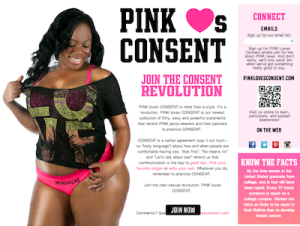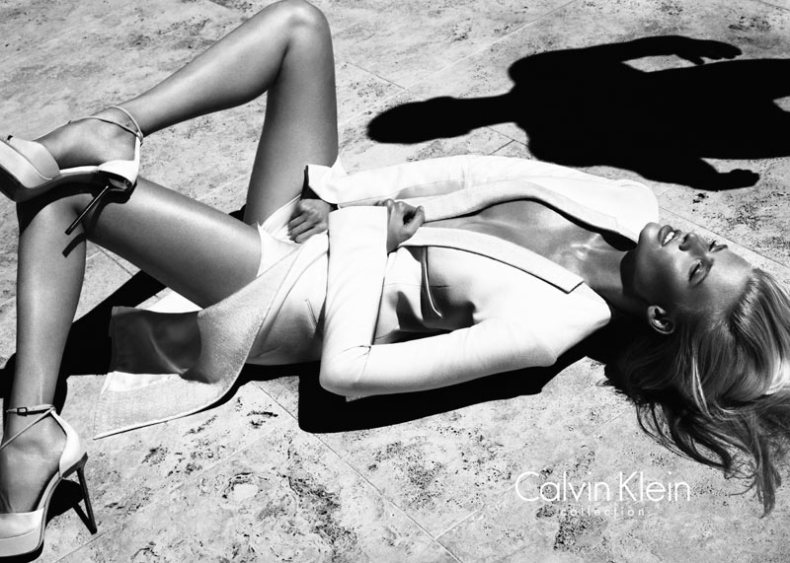
On Monday, the internet was abuzz with the news that Victoria’s Secret Pink had released a new line of panties with slogans about consent. The line, which included underwear with mottoes like “No Means No,” “Ask First,” and “Consent Is Sexy,” was being promoted on a website called pinklovesconsent.com. The site also featured a section explaining how to practice consent and why it was important, and an explanation of why some previous Pink panty designs–“No Peeking” and “Sure Thing”–contributed to rape culture by suggesting that saying “no” was a good way to flirt and that consent could be presumed.
Victoria’s Secret, which made the news recently for appropriating and sexualizing Native culture in their annual fashion show seemed like an unlikely company to be fighting rape culture, even as a PR move. Sure enough, the website and fashion line turned out to be a hoax dreamed up by FORCE: Upsetting Rape Culture, an activist group that made headlines for projecting the words “Rape is Rape” on the US Capitol Building the night before the US presidential election.
As FORCE explained, “We could write a pamphlet about consent. In fact, we have written and distributed pamphlets about consent. But how many people are reading pamphlets about sexual practices and how many people are reading facebook post about Victoria’s Secret? Consent needs to become a mainstream idea.”
After Jezebel blogger Katie J.M. Baker broke the hoax story, many people expressed their desire for these products to be real. “I would buy the hell out of those!” read one of the comments. Not surprisingly, a lot of people like the idea of underwear that promotes positive sexual messages, not to mention campaigns featuring models of a variety of sizes and races.
But other comments on the site questioned whether such a campaign, had it really come from the lingerie line, would have been a tangible step to combating rape culture. “No “commodity feminism” from corporations that KNOW they will reap more from fueling [sic] & exploiting women’s insecurities, and promoting rape culture—than they would if they devoted themselves to fighting sexism,” read one comment. Another chillingly speculated, “I work with victims of sexual violence and I am just now having a grim daydream of a pair of these panties in an evidence bag, a case going to trial, and a defense [sic] attorney just LOVING IT. “Of course he didn’t rape her! She was wearing her ‘No means No’ panties! How could he not stop and ask?””
So—what do you think? Would “Consent is Sexy” panties empower people and bring consent culture into the mainstream, or is Victoria’s Secret too much a part of the problem to be part of the solution?




